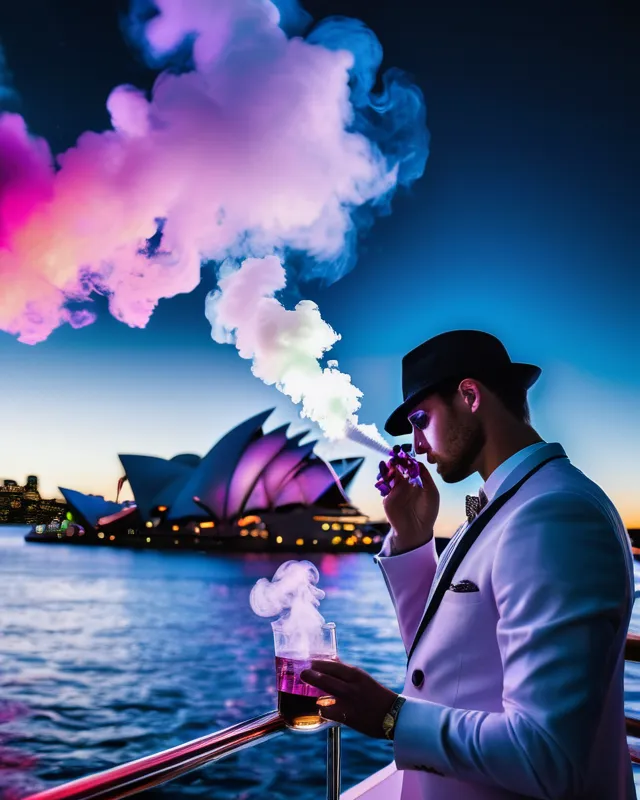By Paul Gregoire: Sydney Criminal Lawyers Blog
Two NSW police officers recently approached a 13-year-old boy vaping outside a Coles supermarket in the NSW town of Deniliquin, and, as he stood right beside his mother and another youth, one officer ordered him to hand over his “vapes” or they were “going to have to use force”.
The officer said it was an offence to be in possession of the device. The officer was wrong, as this is not a crime. The boy’s mother told the officer he didn’t have to hand it over, as it was “his dad’s”. And the two officers then wrestled the boy to the ground and seized his device.
Needless to say, this display of NSW police brutal buffoonery has gone viral.
And the unfolding scene also reveals the stark demonisation that vaping has undergone in this country, as, while the sight of a 13-year-old puffing on a cigarette has never been too uncommon, police don’t assault kids over smoking.
Vaping comprises of inhaling heated liquid in air, rather than sucking in tobacco smoke. In comparable countries, like NZ, authorities have embraced vaping as a healthier alternative to highly carcinogenic smoking, and perceptions of vaping haven’t equated to police excessive force incidents.
Indeed, back in the mid-2000s, when vaping devices and e-cigarettes emerged, instead of welcoming the alternative to long problematic smoking rates as in other nations, local authorities took a suspect approach to the point of banning the sale of nicotine vapes in 2009.
Vaping madness
“The video of violent police action against a 13-year-old boy, who was vaping, is yet another inevitable consequence of demonising the relatively harmless practice,” Australian Tobacco Harm Reduction Association (ATHRA) director Dr Alex Wodak told Sydney Criminal Lawyers.
“Meanwhile no police action would be taken – or should be taken – against a 13-year-old boy inhaling much more dangerous cigarette smoke,” he added.
“The crux of Australia’s vaping policy has been a failure to always seriously commit to drug policy and to practice harm reduction.”
Other nations, like the US, did have early initial misgivings about vaping in the late 2000s, but by mid-last decade that had led to an acceptance of the alternative to smoking, coupled with a concerted effort to ensure that the products aren’t marketed to appeal to minors.
According to Wodak, the approach taken by local authorities, which consists of supply reduction, or the removal of lawful product for sales is flawed, as mounting vaping restrictions are becoming “tantamount to prohibition” and already outcomes are beginning to reflect the failed drug war.
Reducing tobacco harms
The National Drug Strategy Household Survey 2022-23 found that daily vaping rates have increased from 1.1 percent of the population in 2019 to 3.5 percent in 2022/23. And of those using nicotine liquid, which increases effectiveness in stopping smoking, 87 percent are sourcing it illegally.
This means that instead of adults being able to enter a tobacconist and buy nicotine vapes, on the provision of a valid proof-of-age identification, they’re supposed to pay to see a doctor to get a script.
This requirement is unhelpful for those times when a quitting smoker is running short of prescribed supply.
But the easy alternative to seeing a doctor is for an adult or a child to walk into a shop and buy from the illegal under-the-counter supply. The authorities can’t prevent this supply from entering Australia at the border. And no proof-of-age is required when purchasing illegal products.
Of course, the clear way forward would be to allow adults to purchase regulated and legal nicotine vapes from a tobacconist, with sellers checking IDs at point of sale.
The survey also notes that over the same period daily smoking declined from 11 percent of the population in 2019 to 8.3 percent mid-last year. The doctor points out that this is a 6 percent reduction a year, which is three times the rate of decline before vaping became so popular.
“The demonisation of vaping is following the very familiar pattern established in other forms of drug prohibition,” Wodak continued. “Strictly speaking, vaping in Australia is regulated, but the severely restrictive nature of the regulation is unacceptable to more than 90 percent of people who vape.”
The Australian crackdown
“In Australia, political leaders, the health establishment, tobacco control, public health and lay and health/medical media provide a daily blitzkrieg exaggerating the risks of vaping, while denying its benefits in reducing smoking,” Wodak made clear.
“Advocacy for vaping as a harm reduction alternative to smoking is uncommon in Australian media,” he continued. “Despite this, the rate of vaping more than trebled in the last three years.”
Following the initial 2009 ban on nicotine vapes, the federal government sought to prohibit importing nicotine liquid in mid-2020, as it has long been possible to do so, via illegal routes and later through the Therapeutic Goods Administration’s Personal Importation Scheme.
However, the ban was dropped due to push back and instead a Senate inquiry was established, delivering its report in late 2020.
And there are plans to introduce a bill this month to prohibit local manufacture, supply, advertising and commercial possession of disposable and nontherapeutic vapes. Although, Wodak considers the bill will unlikely pass in the Senate.
Health minister Mark Butler heralded in the war on vapes as he addressed the National Press Club last May. The minister said that he’d determined to follow TGA advice and implement a series of crackdown bans on the supply of imported vapes and the proposed coming domestic ban.
So, on 1 January 2024, a nationwide prohibition on the importation of single-use vapes came into effect. This applies to nicotine and non-nicotine vapes. And as of 1 March, the ban also applies to the importation of nontherapeutic reusable vaping devices.
The coming laws are expected to limit the flavours of vaping liquid to mint, menthol and tobacco and all vaping – nicotine-based or otherwise – will be limited to prescription-only therapeutic vapes: those specifically for the purpose of giving up smoking.
Vaping war casualties
The footage of the officers assaulting the 13-year-old over a vaping device clearly shows how demonised the sucking in of heated liquid has become in the public mind. And meanwhile, as the doctor points out, 2 million Australians are being denied this effective means to quit smoking.
Right now, there’s also an illicit tobacco turf war primarily centered in Victoria. Wodak advises that 57 stores have been firebombed right across the country since last March, and, as the trade in illicit vapes is about to go through the roof, the conflict will surely soon involve them.
In fact, three people have been shot dead in Melbourne in regard to the illicit tobacco conflict.
And by the end of January, a month into the new ban on disposable vapes, the minister was posing with an ABF officer, after seizing 13 tonnes worth of vapes at the border. Yet, reports didn’t advise that border seizures won’t stop the flow of illicit vapes, and their trade is only set to skyrocket.
However, across the ditch in New Zealand, the doctor points out, vaping has been regulated and embraced. And Pakeha and Māori smoking rates are in decline.
“Smokers are increasingly transitioning from deadly combustible cigarettes to much safer vaping,” Dr Wodak advised.
“The world’s largest traded tobacco company, Philip Morris International, increased the proportion of its net revenue generated from smokefree products from less than 1 percent in 2015 to 39.3 percent in the fourth quarter of 2023.”
“So, where have Australia’s advocates for social justice been when it is the low income and disadvantaged, who are more likely to smoke and smoke more cigarettes per day?” the doctor questioned in concluding.






